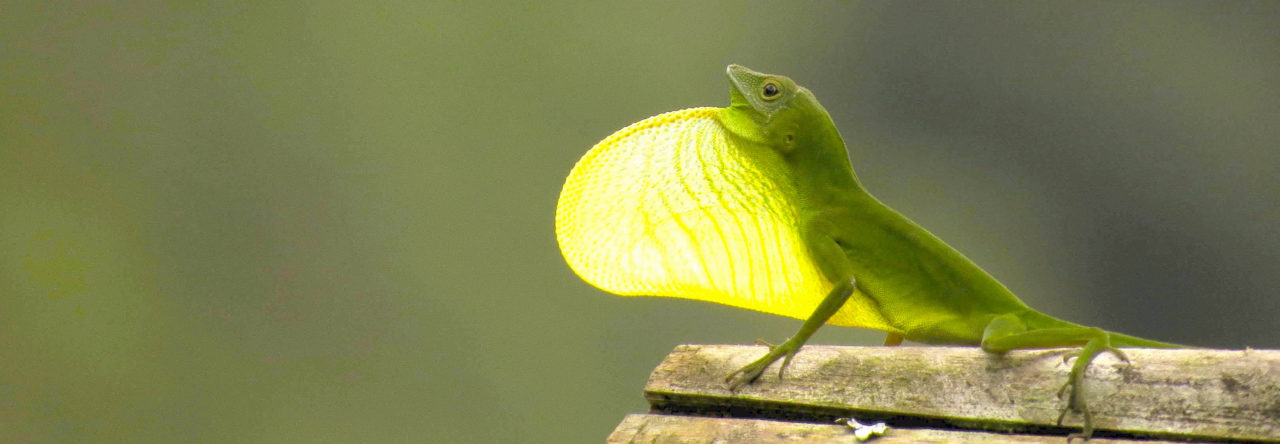
Photo from http://www.frogtown.org/
For more than three decades, since the seminal work of Ray Huey, Al Bennett, and Steve Arnold, biologists have measured whole animal performance–how fast they run, how far they jump, how well they can swim–to understand how species are adapted to their environment. Work on anoles has been a prime example of how we can study differences among individuals and species to understand how natural selection works and why species living in different environments possess different morphologies (several AA posts have discussed this sort of work [e.g., 1, 2, 3]).
But a critical assumption of all of this research is that we can get animals to perform maximally. Otherwise, it’s tough to study what causes variation in maximal capabilities if animals aren’t performing maximally. The catch is: how do you tell if an animal is going all out? Sure, it’s easy to weed out the slackers, but distinguishing a lizard giving it his all from one going at, say, 90% of max…hard to tell.
In an important and entertaining paper, Henry Astley and colleagues provide some sobering information. The short story goes as follows, and you really should watch the video below for more details and some great images: biomechanicians have studied frog jumping for decades to understand how muscles work. Bullfrogs are known not to jump very well. The maximum jump ever recorded in the lab was only 1.3 m, whereas the much smaller Cuban treefrog can bound 1.7 m. The proffered explanation was that bullfrogs live on land and in the water, and so their morphology must be a compromise.
But…the Guinness Book of World Records claims that a bullfrog–Rosie the Ribeter, to be exact–once jumped 2.18 meters at the Calaveras County Fair. That’s 68% farther than any scientist had ever recorded in the lab. Sounds like a bunch of hooey, right? Well, just to debunk this nonsense, a bunch of Brown University biologists headed to sunny California to visit the County Fair, eat some cotton candy, and check out the frogs. And, lo and behold, it’s true–bullfrogs there regularly far exceed the lab record.
The story’s a lot more complicated–it turns out that there are “pro” frog jumpers–and I won’t go into the details; the paper is well worth a read, very entertaining and sobering for lab performance types (abstract here). But the short story is this: it seems that lab studies had massively underestimated how far bullfrogs can jump, calling into question many of the conclusions that had been reached about their physiology. Moreover, records for the maximum jump distance at the fair showed a steady increase for the first 50 years before levelling off for the last 30. This suggests that the people who jump the frogs (and some families have been doing this for generations) have only gradually learned exactly what conditions and behaviors maximally stimulate the frogs. And this suggests that lab scientists, who just guess at what may work best and tinker a little bit, may not have much of a chance of hitting on the right stimuli.
There’s been lots of great press coverage, too–just google “calaveras frog astley” or something like that. But, first, watch the video and go read the paper (I can email you a copy if you can’t access it online).
httpv://www.youtube.com/watch?v=QKFpvoez7_M
- Evolution in Real Time on Lizard Island - March 23, 2025
- Spider Snags Adult Anolis osa - March 22, 2025
- An Homage to the Green Anoles of New Orleans - March 21, 2025


Mark Twain
Did they check for lead shot? http://en.wikipedia.org/wiki/The_Celebrated_Jumping_Frog_of_Calaveras_County